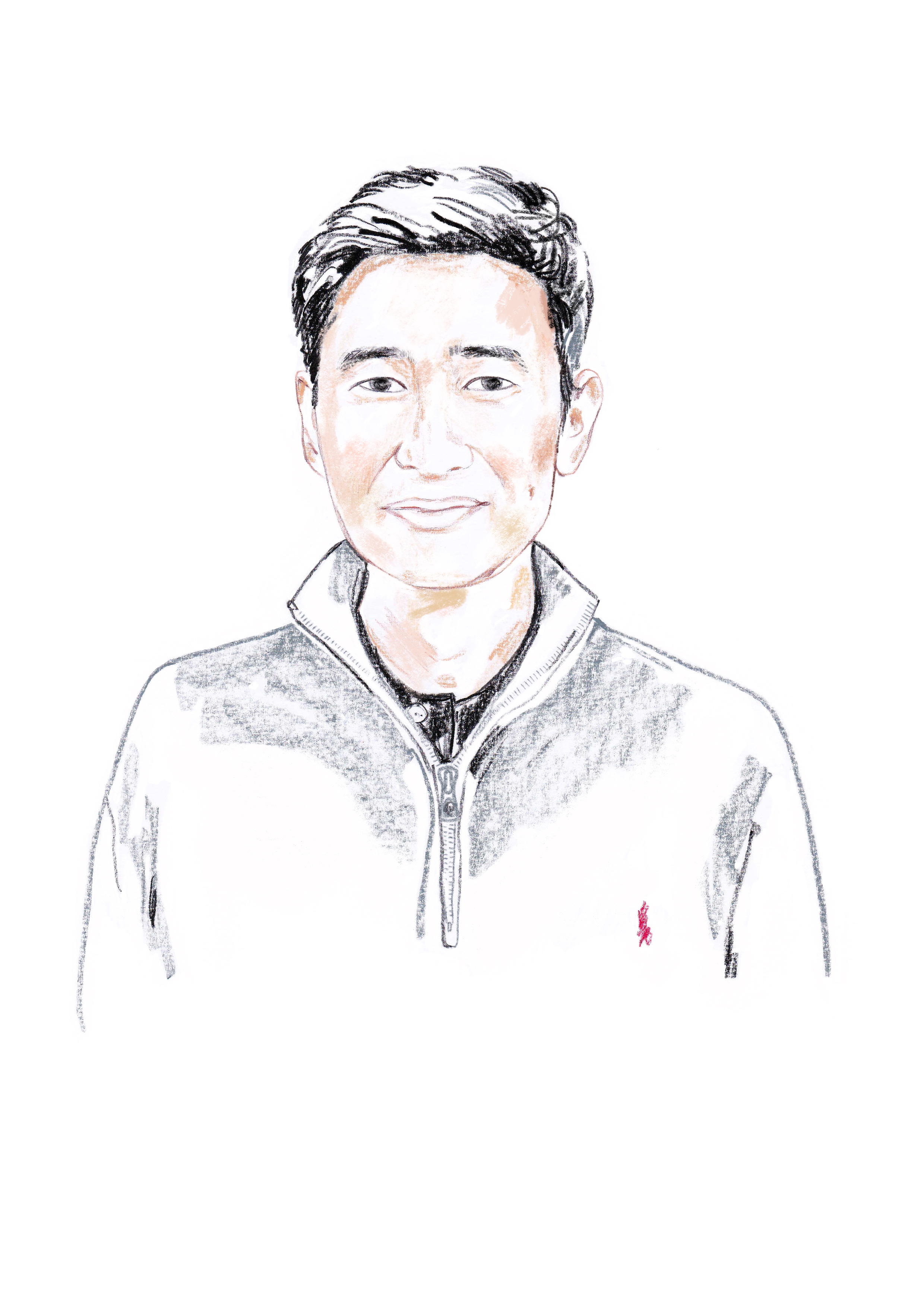TU Delft presents the eight best Climate Action & Energy Papers
Record temperatures, floodings and melting sea ice: radical weather events are becoming more frequent and have a devastating effect on our planet and our lives. By accelerating the energy transition and climate action TU Delft, together with its partners, tries to prevent climate change and contain its consequences. With the election of the Best Climate & Energy Paper, TU Delft is highlighting a number of large and small innovations that contribute to this.
With about a thousand climate and energy scientists, TU Delft is one of the largest research institutes in Europe in this field. An important task: after all, the climate problem is complex and urgent. Because TU Delft is concerned about the changing climate, it was decided in 2021 to allocate €22 million for the next ten years to the Climate Action programme. In addition, TU Delft is investing another €100 million in making its campus more sustainable. Not to forget our thousands of students, PhDs and postdocs thanks to whom smart ideas will become even smarter, and then smart solutions.
At the Best Climate Action & Energy Paper Award ceremony, to be held on Wednesday 15 March, eight young scientists who have worked as first authors on a publication will pitch their research findings. There are many facets to climate change. You will therefore find their solutions – presented below – to be as diverse as they are creative.
Climate Action
The first order of business of engineers is to understand climate change (Climate Science). It turns out that adapting a neurological machine learning model makes it very suitable for quantifying the climate impact of aviation. Having gained sufficient understanding, we then work on solutions that can help mitigate the impact of climate change (Climate change mitigation). If you install solar panels several meters above the ground, we no longer have to choose between using farmland for the production of solar energy or for crop growth. We can do both simultaneously.
If mitigation is insufficient, we may have to adapt to climate change (Climate change adaptation). A model for calculating the impact and damage in high detail may provide just the guidance we need when deciding on the appropriate preventative measures – for floodings in Venice, for example. And nothing happens without decision-making. To be sure that smart solutions make it into practical use, it therefore helps if we can untangle the web of stakeholders, rules and strategies (Climate change governance).
Energy
The challenges addressed in the energy domain sometimes yielded surprising insights. For one, phasing out natural gas for residential heating does not mean that we should all immediately switch to heat pumps (Urban Energy). Hybrid heating strategies may prove more beneficial when aiming to reduce CO2 emissions prior to 2050. Our electricity grid may not even be prepared for all-electric heating. A smart pump-scheduling strategy to keep our land and feet dry may not only help in stabilising this grid, it also saves energy and money (PowerWeb).
There’s (almost) no end to innovative solutions when it comes to green energy. If we use smart algorithms to optimise wind farms in real-time, we get an additional wind turbine for free without being visible on the horizon (Wind energy). The icing on the cake comes from tackling a thermodynamical near-impossibility: generating electricity from low temperature waste heat using an innovative battery design (e-Refinery).
In overdrive
The 2050 climate targets are ambitious, and we must increase the speed of innovation if we are to reach these goals in time. But on Wednesday 15 March, we take a brief break to celebrate some of the smaller and larger solutions that help put the climate and energy transition in overdrive.
The Best Climate and Energy Paper Award 2022 Ceremony will be held on Wednesday 15 March.
Location: The Co-Creation Center of The Green Village at the TU Delft Campus.
Starting time: 15:00h
You can still register here.
If you would like to interview one of the finalists, or learn more about TU Delft's climate and energy ambitions, feel free to contact:
- Dave Boomkens, science information officer Climate & Energy, 06 3408 1461 d.j.boomkens@tudelft.nl
- Inge Snijder, science information officer Climate & Energy, 015 27 87538, i.snijder@tudelft.nl
Climate neuroscience for aviation
There is a knowledge gap when it comes to how non-CO2 emissions of aviation affect global warming. Jin Maruhashi put the focus on the warming effect of nitrogen oxide (NOx) emissions, which should not be neglected and currently carries large uncertainties. His detailed global-scale simulations resulted in terabytes of data. To find patterns in these data, he added a climate-warming component to an otherwise purely geometric machine learning algorithm used by neuroscientists to find nerve bundles in the brain. His analysis, for example, shows that seasonality plays an important role, and that flight trajectories coinciding with downward drafts in earth’s atmosphere have a reduced global warming effect. His research may eventually be used to optimise flight trajectories and altitudes taking into account a global warming perspective, rather than mainly fuel consumption. Next up for himself: applying the same methodology to investigate the even-less-understood climate impact of aerosols.
Jin Maruhashi (AE)
Transport patterns of global aviation NOx and their short-term O3 radiative forcing – a machine learning approach
Fertile ground: solar panels above crop cultivation
By allowing the simultaneous production of food and electricity, agrivoltaics combines the best of two worlds. Solar photovoltaic panels (PV), installed several meters above ground, allow agricultural machinery to work the land. They furthermore provide protection to crops from harmful climate change effects such as a rise in global temperatures, fluctuating weather patterns, and water scarcity. Depending on the selected crop, PV design, and local climate, this combination can be mutually beneficial. Alex Katsikogiannis developed a multi-scale modelling framework to tailor the PV design and meet the needs of crops. Customized bi-facial PV panels, that absorb light from both sides, were found to synergize better with crop cultivation. Specifically, farming of blueberries under an agri-PV array in Boston (USA) increased the energy yield per panel while land productivity increased by 50% - when compared to conventional and separate production. Similar results could be feasible even for moderate climates such as the Netherlands.
Alex Katsikogiannis (EEMCS)
Integration of bifacial photovoltaics in agrivoltaic systems: A synergistic design approach
Detailing and preparing for Venice floods
When fully closed, the MOSE barrier that became operational recently will protect the world-heritage site of Venice from storm surges of up to 3 meters. But with a rising sea level, an increasing frequency of storms, and occassional dam maintenance, there continues to be a need for assessing flood risk and potential damage. Rather than assuming a fixed water level for the entire inner-city, Julius Schlumberger developed a hydrodymic model that calculates the flood wave’s progression and regression through narrow streets, resulting in variations in the water level. He combines this with a damage model for specific parts of houses, such as doors and plaster, thereby providing maximum insight into the protection offered by individual flood preparedness measures. His risk-assessment framework can be used to assess the flood impact of various scenarios. It can thus help support systematic and individual flood protection management for the protection of the cultural heritage of Venice.
Julius Schlumberger (CEG)
Developing a framework for the assessment of current and future flood risk in Venice, Italy
The institutional road towards climate resilience
With its multimodal transport infrastructrure, the Port of Rotterdam is particularly vulnerable to extreme weather events. And with many rules, norms, and strategies as well as various owners and numerous stakeholders, there is plenty that can be in the way of preparing this region for climate change. Batoul Mesdaghi formalised and applied a new approach called Institutional Network Analysis. Rather than merely showing connections between stakeholders, it also explains their relationship by means of the various formal and informal rules, norms and strategies – in combination providing a comprehensive picture of any institutional landscape. Applying it to the Botlek and Vondelingenplaat, her approach exposed several voids and points of concern in decision-making that could hamper efforts towards climate adaptation. Climate change already is a humungous challenge from a purely technical and practical perspective. Her approach is a valuable instrument that can help clear the road ahead of any institutional hurdles.
Batoul Mesdaghi, MSc (TPM)
Institutional dependencies in climate adaptation of transport infrastructures: an Institutional Network Analysis approach
Heat pumps for everyone? Not necessarily!
In 2050, the Netherlands will stop using natural gass for the heating of houses. But to help combat further climate change, we also want to maximally reduce CO2 emissons prior to that deadline. Chelsea Kaandorp modelled the heat demand for Amsterdam neighbourhoods like the Molenwijk and Prinses Irenebuurt down to the level of individual houses. She then determined the choice of heating system resulting in the lowest CO2 emissions – for various ambition levels in home insulation and the generation of green electrity. She found up to ten times lower overall emissions for the most ambitious scenario’s. While All-electric heating solutions play a major role in this case, other scenario’s call for hybrid heating strategies. Heat networks were found to be beneficial too, but only when a certain minimum heat demand is maintained. This may discourage further insulation efforts, limiting CO2-reduction – in short, a carbon lock-in. Her study offers policy makers valuable guidelines for managing the heat transition at the level of neighbourhoods, both within and outside of the Netherlands.
Chelsea Kaandorp (CEG)
Reducing committed emissions of heating towards 2050: Analysis of scenarios for the insulation of buildings and the decarbonisation of electricity generation
Smart pump-scheduling for water management
With large swaths of the Netherlands below sea level, the Dutch water boards use a lot of energy to keep our feet dry. Smart pump-scheduling – pumping water when the sun is shining or the wind blowing – lowers costs, reduces CO2 emissions and may help balance the electricity grid. But weather conditions can change rapidly, so Ties van der Heijden developed a multi market strategy that operates at various timescales. He showed that his smart optimisation algorithm can lower costs with 15%, with a reduction of 50% feasible once the Netherlands has increased its capacity for generating green energy to that of Germany. He limited his study to the water system of the Noordzeekanaal–Amsterdam-Rijnkanaal, but his approach can be applied to all of the Netherlands and other low-lying regions. And the underlying optimisation techniques may be of benefit to almost anything that uses energy – including your refrigerator.
Ties van der Heijden (CEG and EEMCS)
Multi-market demand response from pump-controlled open canal systems: an economic MPC approach to pump-scheduling
An extra wind turbine out of thin air
Variations in wind speed and wind direction put wind turbines in each others wake (“wind shadow”), limiting overall energy production. This translates into a need for simultaneous and real-time optimisation of the performance of all turbines in a wind farm. Maarten van den Broek developed a fast physics-based algorithm for wind farm flows. It can be used for optimising the direction of the rotor, thereby steering the wake away from downwind turbines, as well as optimising the angle of individual blades. Under ideal circumstances, this can increase the energy yield with up to dozens of percentage points. Over a whole year, with wind speed and direction continually varying, it may be the equivalent of an additional wind turbine per wind farm. Being physics-based, a major advantage of the (final) algorithm is that it is directly applicable to any wind farm. No wonder that many large energy companies have shown interest.
Maarten van den Broek (3mE)
Adjoint optimisation for wind farm flow control with a free-vortex wake model
Electricity from waste heat
More than half of all the energy produced is lost as waste heat. If temperatures rise above 100 degrees celsius, we can use steam to generate electricity. But there are few technologies for generating electricity from lower temperatures. Jorrit Bleeker developed such a solution, consisting of two flow (liquid) batteries connected by heat exchangers. One will be placed in the high temperature environment, the other in a cold(er) environment. Charged at a high temperature, the electrolytes produce additional electricity when discharged at a lower temperature. The biggest challenge was to find the electrolytes that would make generating electricity from a continuous heat source commercially interesting. It’s not a very efficient process, but 1% from a megawatt still is a lot of energy. Think of all those data centres popping up all over the Netherlands that already use 3,2 billion kWh of electricity per year and that need cooling. There is also a lot of interest in the reverse process, which may lead to a very efficient heat pump.
Jorrit Bleeker (AS)
Thermo‐electrochemical redox flow cycle for continuous conversion of low‐grade waste heat to power








